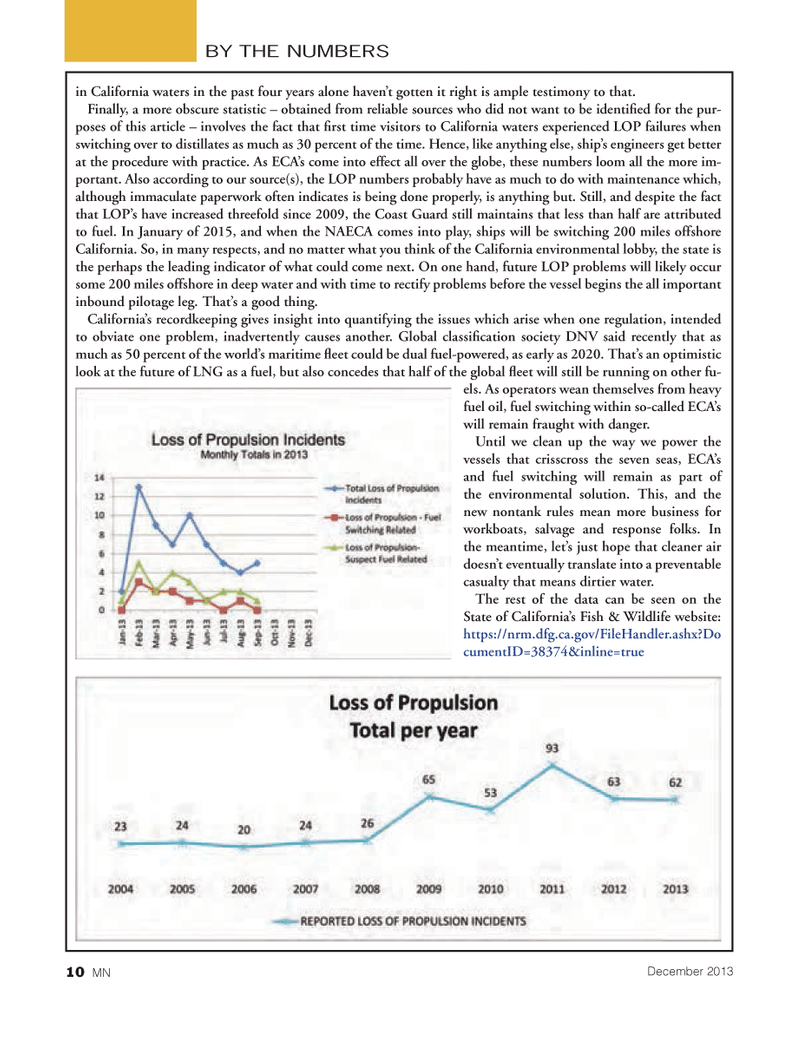
Page 10: of Marine News Magazine (December 2013)
Innovative Products & Boats of 2012
Read this page in Pdf, Flash or Html5 edition of December 2013 Marine News Magazine
in California waters in the past four years alone haven?t gotten it right is ample testimony to that. Finally, a more obscure statistic ? obtained from reliable sources who did not want to be identi ed for the pur-poses of this article ? involves the fact that rst time visitors to California waters experienced LOP failures when switching over to distillates as much as 30 percent of the time. Hence, like anything else, ship?s engineers get better at the procedure with practice. As ECA?s come into effect all over the globe, these numbers loom all the more im- portant. Also according to our source(s), the LOP numbers probably have as much to do with maintenance which, although immaculate paperwork often indicates is being done properly, is anything but. Still, and despite the fact that LOP?s have increased threefold since 2009, the Coast Guard still maintains that less than half are attributed to fuel. In January of 2015, and when the NAECA comes into play, ships will be switching 200 miles offshore California. So, in many respects, and no matter what you think of the California environmental lobby, the state is the perhaps the leading indicator of what could come next. On one hand, future LOP problems will likely occur some 200 miles offshore in deep water and with time to rectify problems before the vessel begins the all important inbound pilotage leg. That?s a good thing. California?s recordkeeping gives insight into quantifying the issues which arise when one regulation, intended to obviate one problem, inadvertently causes another. Global classi cation society DNV said recently that as much as 50 percent of the world?s maritime eet could be dual fuel-powered, as early as 2020. That?s an optimistic look at the future of LNG as a fuel, but also concedes that half of the global eet will still be running on other fu- els. As operators wean themselves from heavy fuel oil, fuel switching within so-called ECA?s will remain fraught with danger. Until we clean up the way we power the vessels that crisscross the seven seas, ECA?s and fuel switching will remain as part of the environmental solution. This, and the new nontank rules mean more business for workboats, salvage and response folks. In the meantime, let?s just hope that cleaner air doesn?t eventually translate into a preventable casualty that means dirtier water. The rest of the data can be seen on the State of California?s Fish & Wildlife website: https://nrm.dfg.ca.gov/FileHandler.ashx?Do cumentID=38374&inline=true BY THE NUMBERSDecember 201310 MNMN Dec2013 Layout 1-17.indd 10MN Dec2013 Layout 1-17.indd 1011/25/2013 12:39:40 PM11/25/2013 12:39:40 PM

 9
9

 11
11
